There’s still time to harvest a deer
|
If you missed the opportunity to take a deer during firearms season, don’t worry – there’s still time. Muzzleloader season opens Dec. 7. The special antlerless season opens Dec. 26.
|
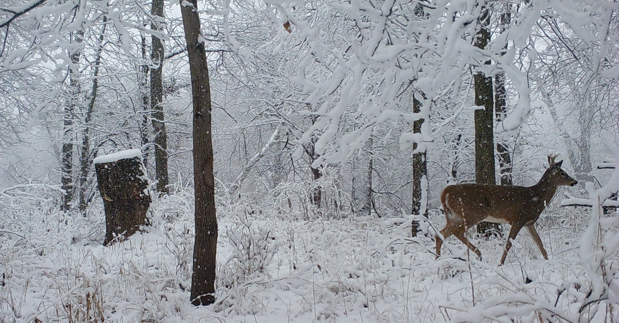 Find all deer information in one place
Have questions about deer hunting, regulations and seasons, or where to hunt? Find all the information you need for a successful deer hunt on one webpage.
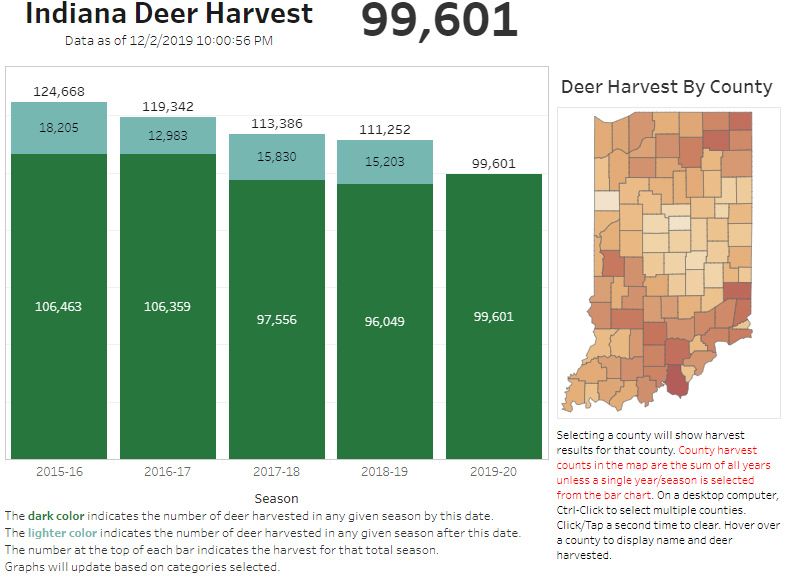 New deer harvest website
DNR has recently launched a new interactive website allowing deer hunters to access white-tailed deer harvest data. Hunters have asked for detailed harvest data and comparisons between years. This new website is a direct result of that feedback. Harvest data is updated daily.
Check counties open for special antlerless season
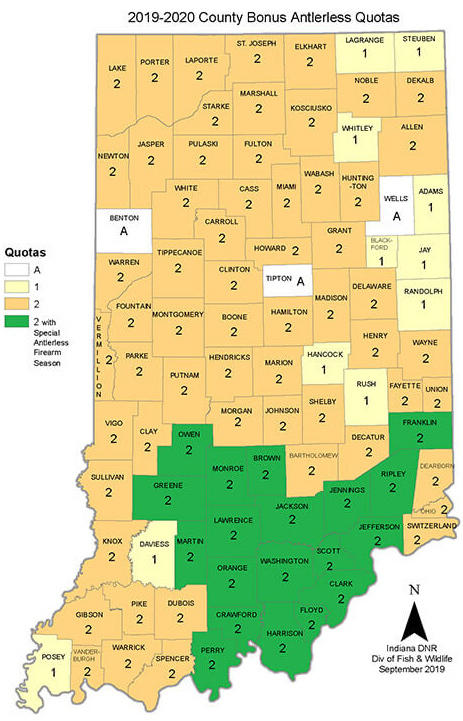 Remember to check where you can hunt during the special antlerless firearms season. Counties that have historically been open for this season may have changed this year. County bonus antlerless quotas were also reduced in response to the effects of epizootic hemorrhagic disease (EHD) on the deer herd this year. The special antlerless firearms season is only allowed in counties marked in green.
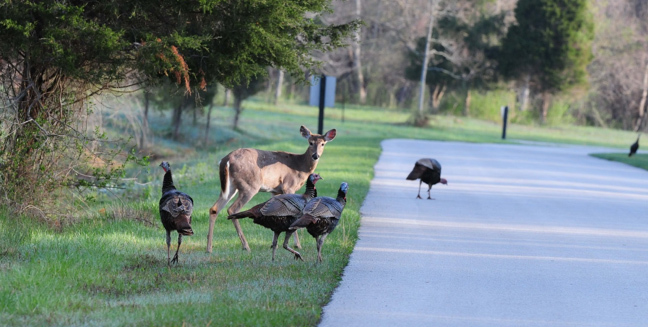 Hunting seasons in December
Deer Muzzleloader: Dec. 7–22
Deer Special Antlerless: Dec. 26 – Jan. 5, 2020
Wild Turkey Fall Archery: Dec. 7 – Jan. 5, 2020
Pheasant (Cock only): Closes Dec. 15
Dove: Dec. 14 – Jan. 5, 2020
Snipe: Closes Dec. 16
Quail (north of Interstate 74): Closes Dec. 15
Ducks (North Zone): Closes Dec. 8, reopens Dec. 21–29
All waterfowl seasons
Additional hunting and trapping seasons
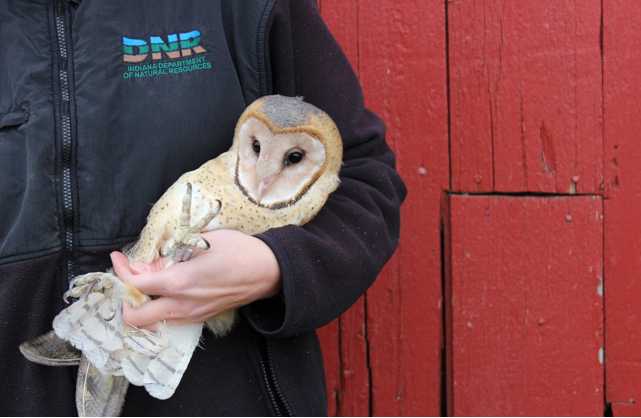 Barn owls benefit directly from Indiana’s Nongame Wildlife Fund
Give back to Indiana’s wildlife this holiday season
It’s the season of giving and Indiana’s wildlife could use a gift from you. The Indiana Nongame Wildlife Fund benefits more than 750 endangered and nongame animals, including barn owls, hellbenders, Indiana bats, and many more.
All funding comes from Hoosiers who donate; no state tax dollars are used. For every $5 donated to the fund, an additional $9 is awarded from federal funds.
Gift a license to someone who hunts
Do you need to buy a gift for your favorite hunter, trapper, or angler? Not sure what equipment they want or need? Give a gift certificate to buy a hunting, trapping or fishing license — the need is guaranteed.
 Coralberry provides food throughout the winter.
Help Indiana’s wildlife survive cold winter weather
Native wildlife could use your help during extreme weather. Wildlife species have four basic needs: space, water, food, and cover. Providing an ample supply of food and cover in the winter months can help them survive.
To increase the winter supply of food, plant a variety of native shrubs and trees that produce both soft fruits and hard seeds. Soft fruit from species like persimmon, blackgum, elderberry, serviceberry, and dogwood are relished by many species of birds and mammals. Hard-seed species include hazelnut, hickory, pecan, and oak. Plant both white and red oak groups, as the acorns develop at different times. Some other trees and shrubs provide consistent food sources throughout winter, including red cedar, sumac, coralberry, and American cranberry bush.
Winter cover is also valuable because it can shield wildlife from harsh winter winds and snow. Plant evergreen trees or shrubs that do not lose their leaves, such as pine, red cedar, white cedar, hemlock, or spruce. Allow branches to extend down to the bottom of the trunk to keep out wind and snow.
 |
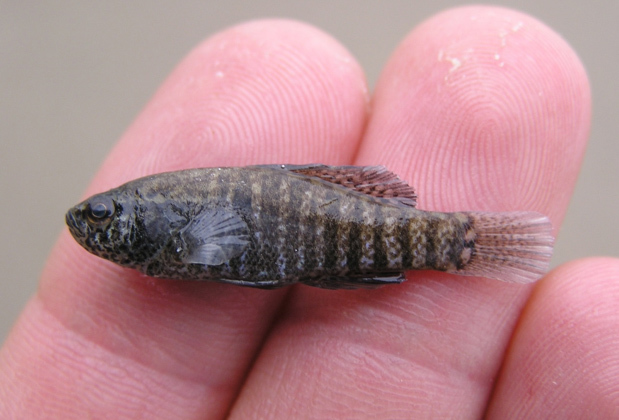 Nongame Wildlife Fund at Work: Aquatics
While many of Indiana's new fish species are either introduced by people or invading non-native species, the banded pygmy sunfish (Elassoma zonatum), a native species, was first discovered in 2006.
Initially collected from a stream in southwest Knox County, biologists conducted targeted sampling after the discovery and uncovered more populations in Posey County. Survey and monitoring of Indiana’s nongame fish species includes sampling locations across the state where there is little or no historic fish information.
It's not surprising that the banded pygmy sunfish went undiscovered for so long, as it reaches a maximum size of less than 2 inches and lives most of its life buried in thick stands of aquatic vegetation. The banded pygmy sunfish is listed as a species of special concern in Indiana.
Help fund survey and monitoring efforts, that could lead to additional discoveries by donating to Indiana’s Nongame Wildlife Fund.
Upcoming events
Recent news releases
LARE applications due Jan.15, 2020
New deer harvest website available for hunters
DNR staffer receives outstanding citizen award
More

About Fish and Wildlife Management in Indiana
Fish and wildlife management and public access are funded by fishing and hunting license revenue and also through the Wildlife and Sport Fish Restoration Programs administered by the U.S. Fish & Wildlife Service. These programs collect excise taxes on sporting arms and ammunition, archery equipment, fishing equipment, and motor boat fuels. The money is distributed among state fish and wildlife agencies based on land size and the number of licensed anglers and hunters in each state. Find out more information about fish and wildlife management in Indiana at Wildlife.IN.gov.
|